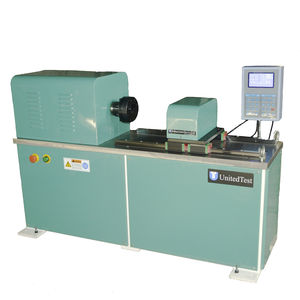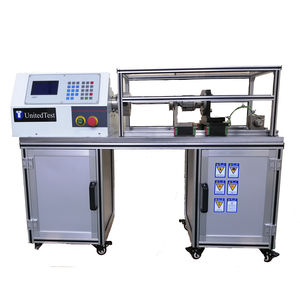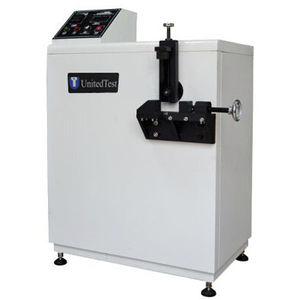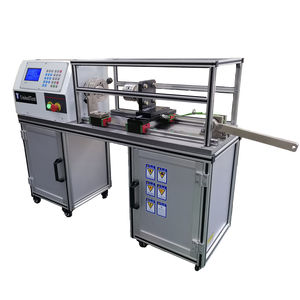
- Metrology - Laboratory
- Metrology and Test Equipment
- Ductility testing machine
- Beijing United Test Co., Ltd.
- Company
- Products
- Catalogs
- News & Trends
- Exhibitions
Torsion testing machine NJS-S seriestorqueductilitymanual


Add to favorites
Compare this product
Characteristics
- Test type
- torsion, torque, ductility
- Operating mode
- manual
- Test material
- for materials
- Technology
- mechanical
Description
Torsion tests twist a material or test component to a specified degree, with a specified force, or until the material fails in torsion. The twisting force of a torsion test is applied to the test sample by anchoring one end so that it cannot move or rotate and applying a moment to the other end so that the sample is rotated about its axis. The rotating moment may also be applied to both ends of the sample but the ends must be rotated in opposite directions. The forces and mechanics found in this test are similar to those found in a piece of string that has one end held in a hand and the other end twisted by the other.
Purpose of torsion testing:
The purpose of a torsion test is to determine the behavior a material or test sample exhibits when twisted or under torsional forces as a result of applied moments that cause shear stress about the axis. Measurable values include: the modulus of elasticity in shear, yield shear strength, torsional fatigue life, ductility, ultimate shear strength, and modulus of rupture in shear. These values are similar but not the same as those measured by a tensile test and are important in manufacturing as they may be used to simulate the service conditions, check the product’s quality and design, and ensure that it was manufactured correctly.
Types of torsion tests:
The three common forms that torsion testing take include failure, proof and operational. A torsion test for failure requires that the test sample be twisted until it breaks and is designed to measure the strength of the sample. A proof test is designed to observe the material under a specified torque load over a set period of time.
VIDEO
Catalogs
Other Beijing United Test Co., Ltd. products
Torsion testing machine
Related Searches
- Test machine
- Measuring device
- Test cabinet
- Indentation hardness tester
- Material testing machine
- Automatic test machine
- PC-controllable testing machine
- Benchtop indentation hardness tester
- Compression test machine
- Digital hardness tester
- Vertical test machine
- Industrial test machine
- Universal test machine
- Digital testing system
- Flexure testing machine
- Tensile test machine
- Industrial testing system
- Laboratory test machine
- Precision test machine
- Rockwell indentation hardness tester
*Prices are pre-tax. They exclude delivery charges and customs duties and do not include additional charges for installation or activation options. Prices are indicative only and may vary by country, with changes to the cost of raw materials and exchange rates.







